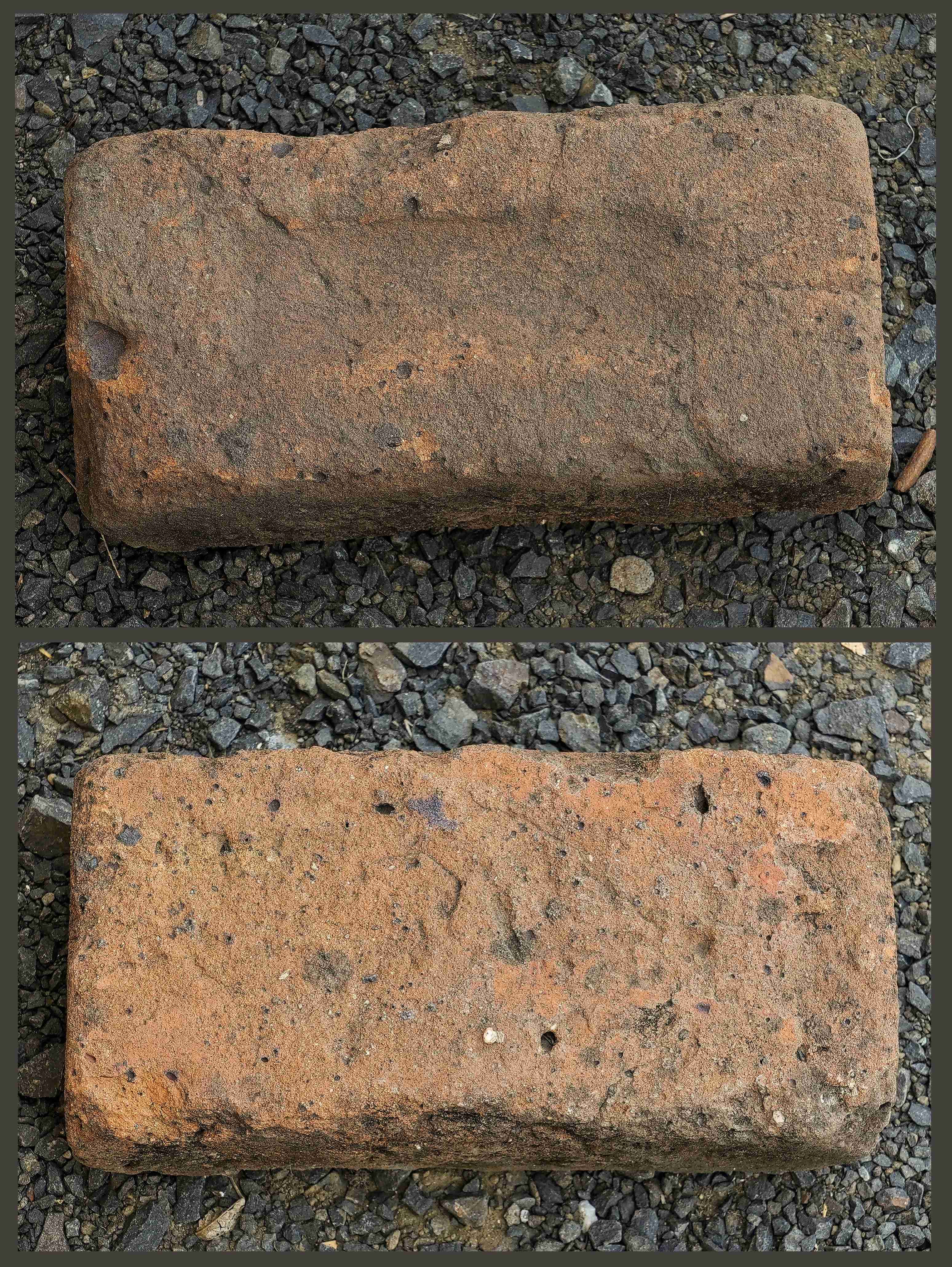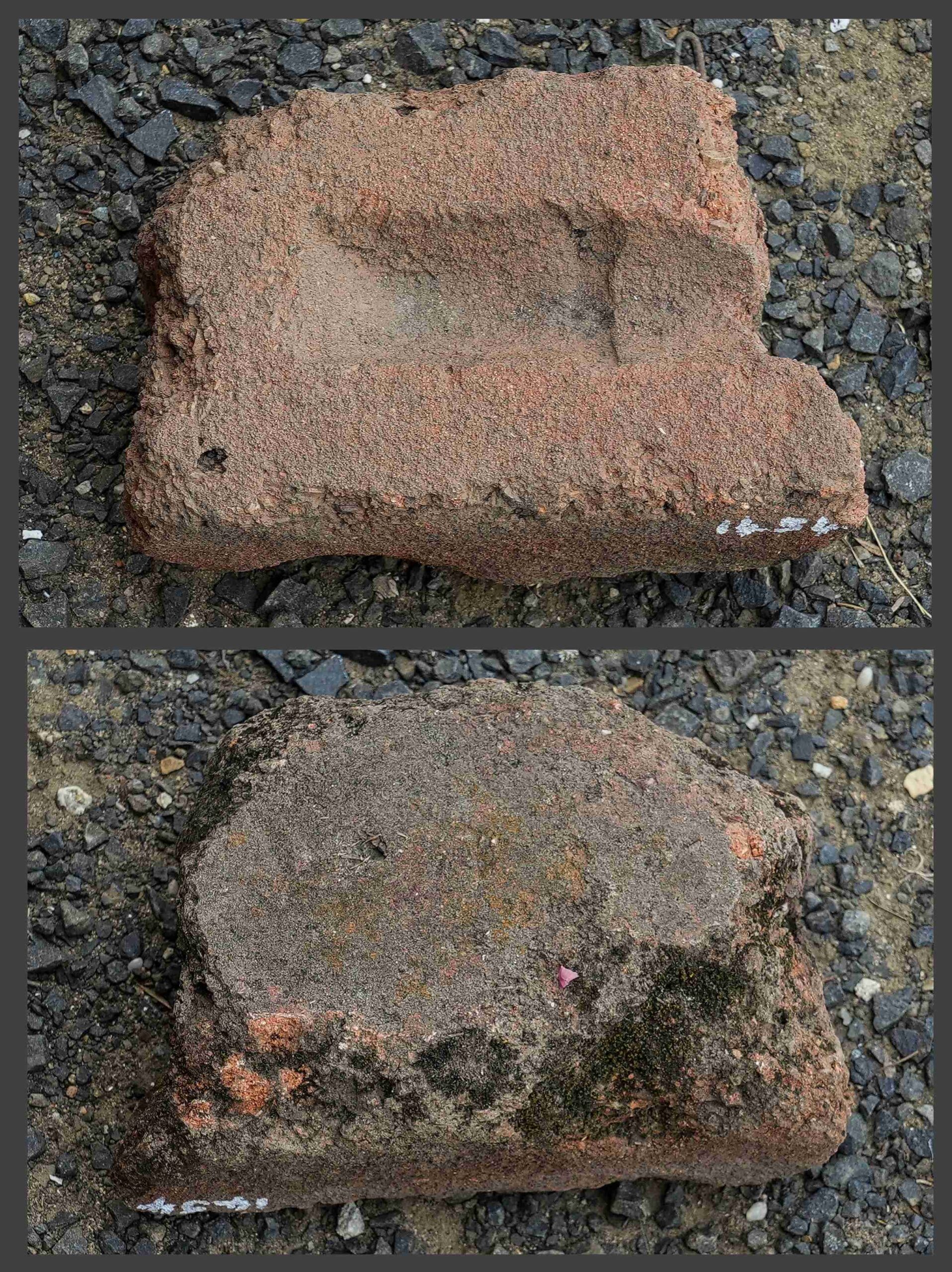Town Marie
There is no documentary evidence that Town Marie had brick kilns; but the presence of kiln bricks and the large number of ordinary bricks suggests that they could have made bricks on site.
History
“Town Marie” was a thriving self-contained small industrial village between 1848 and 1880. The centre, “on the northern bank of the Bremer, almost opposite the Bremer Mills” supported a ‘boiling down works’ and a sawmill with associated buildings including a house for the owner-manager and workers cottages for accommodation for employees.. A tramway, to transport goods to and from a river loading wharf facility, was also in existence. Town Marie was originally accessed via the Bremer River or a dirt track that extended from Ipswich through Tivoli.
Town Marie was the initiative of Richard Joseph Smith who apparently named the centre after his wife’s Christian name. Richard was born in Leicester England in 1819. Richard arrived in New South Wales around 1824 and moved to Brisbane in 1845. He bought original Portion 4 Chuwar, on the north side of the Bremer River, in December 1848 where by May 1849 he had established Town Marie after closing his ‘boiling down works’ in Kangaroo Point (established in 1847) “where the smell got too much for everyone” (ref. 6). The land, which extended between Junction Road and the Bremer River, is now truncated by the Warrego Highway. Both “Bremer Mills” and Town Marie were subsequently acquired by Mr. James Ivory in the late 1860s, with the whole entity becoming known as the “Ivory Estate”. The Ivory Estate grew sugar cane, cotton, tobacco and many other crops, including experimental types.
The financial crisis of 1865 resulted in Richard being declared bankrupt in 1866. Town Marie, i.e. the business and buildings and infrastructure, was then sold to Mr James Ivory around 1867 to 1868. The land however must have been leased to the new owners as the 1949 titles plan 100 years later shows that R.J. Smith (presumably the estate in the name of R.J. Smith) still owned the actual land.
By 1866 we read that a Mr Davis was leasing the meatworks at Town Marie for the purpose of curing meat by a new method.
“The Queensland Times of 8 September 1866 carried the news that Town Marie was to be sold at public auction by the mortgagee, at the City Auction Mart in Brisbane, on Monday 17 September. The advert stated that:
“The valuable property, known as Town Marie Queensland, consisting of freehold estate of 83 acres of land, with frontage to the Bremer River, and also the main road from the Junction to Ipswich, which is distant about 5 miles. On this property are erected and in full working order, a large and complete steaming and boiling establishment, for working closed digesters or open pans, capable of disposing of 100 head of cattle or 2000 sheep per day, either by boiling or steaming, with tallow sheds, hide houses, rendering room, cooperage, stock and drafting yards, slaughtering houses etc etc. A portion of the boiling establishment is now let at a rental of 200 pounds per annum for the purpose of curing meat on Dr Morgan’s principle. The sawmills are in good and substantial working order, all the machinery etc being first class and as good as new. There is a self-acting rack bench, iron top, capable of taking a log 6 feet in diameter and a small bench for small timber. These are driven by a horizontal engine of 16 horsepower, all the machinery leaving been set by first class workmen i.e. solid masonry and substantial and heavy hardwood timber. There is also a vertical saw frame, set on a new and improved principle, for breaking down heavy timber or sawing broad planking, driven by a 16 horse power engine in thorough working order and also a steam winch for drawing the timber from the river to the mill. The timber arrives at the establishment by the river and there are railways laid down to convey it to and from the mill. There is an extra pulley in the main shafting which works a bone mill attached to the establishment.
The mills consist of three large and substantial buildings, joined together, constructed of hardwood and roofed with galvanised iron. There are railways all through the mills, together with turntables to economise labour. The mill is divided off into circular sawmill, vertical sawmill, steam boiling house, engine room, saw room, counting house.
A wharf for the shipping and receiving of timber fitted with a double action crane to carry five tons. On the establishment there are a sufficient number of houses, cottages, huts etc for the firemen, workmen, and mechanics engaged upon the different works.
The house at Town Marie consists of a most comfortable homestead of nine rooms, containing drawing room, dining room, bedrooms, dressing rooms, pantry, office etc together with detached barracks for gentlemen; also store, kitchen, dairy, servants bedroom, courtyard, stables, coach house, fowl house, pigeon house, pigsties, milking yard and bails, calf pens, horse yard, paddocks, flower, fruit and vegetable gardens – all being fully laid out.
Source of edited notes:
“Richard Joseph Smith and Town Marie”
Author: Ken Grubb 2018
The Site










Finds By The Everick Foundation


Bricks I Collected on the Site

Description: Light-brown, sandy brick with large, black blotches.
Condition: Much crumbling.
Type: Sandstock, House Brick.
Frog: Narrow, round frog one side only.
Inscription: None.
Origin: Town Marie site.
Current Location: My Collection.

Description: Light-brown, sandy brick.
Condition: Worn and crumbled.
Type: Sandstock House Brick.
Frog: Narrow, rounded frog one side only.
Inscription: None.
Origin: Town Marie site.
Current Location: My Collection.

Description: Light-orange, sandy brick.
Condition: Much crumbling.
Type: Sandstock House Brick.
Frog: Narrow, rounded frog one side only.
Inscription: None.
Origin: Town Marie site.
Current Location: My Collection.

Description: Multi-coloured, sandy brick.
Condition: Very crumbled.
Type: Sandstock House Brick.
Frog: Narrow, rounded frog one side only.
Inscription: None.
Origin: Town Marie site.
Current Location: My Collection.

Description: Brown, sandy brick in two halves. Small, black blotches with tiny holes. Large impurities.
Condition: Very crumbled.
Type: Sandstock House Brick.
Frog: Very wide, deep, rounded frog one side only.
Inscription: None.
Origin: Town Marie site.
Current Location: My Collection.

Description: Orange, sandy, partial brick.
Condition: Very crumbled.
Type: Sandstock House Brick
Frog: Narrow, slightly-angular frog one side only.
Inscription: None.
Origin: Town Marie site.
Current Location: My Collection.

Description: Blackened, partial brick. Very grainy inside. Possible mortar.
Condition: End broken off. Very crumbled.
Type:
Frog: Narrow, rounded frog one side only.
Inscription: None.
Origin: Town Marie site.
Current Location: My Collection.

Description: Light-orange, sandy brick.
Condition: Worn and very crumbled.
Type:
Frog: None.
Inscription: None.
Origin: Town Marie site.
Current Location: My Collection.

Description: Light-grey, blackened brick.
Condition: All edges extremely crumbled.
Type:
Frog: None.
Inscription: None.
Origin: Town Marie site.
Current Location: My Collection.

Description: White, very grainy, partial brick.
Condition: Broken both ends.
Type: Kiln Brick.
Frog: None.
Inscription: “….CAR….” (indented).
Origin: Town Marie site.
Current Location: My Collection.

Note: British kiln bricks were often transported to Australia as ballast in sailing ships.
